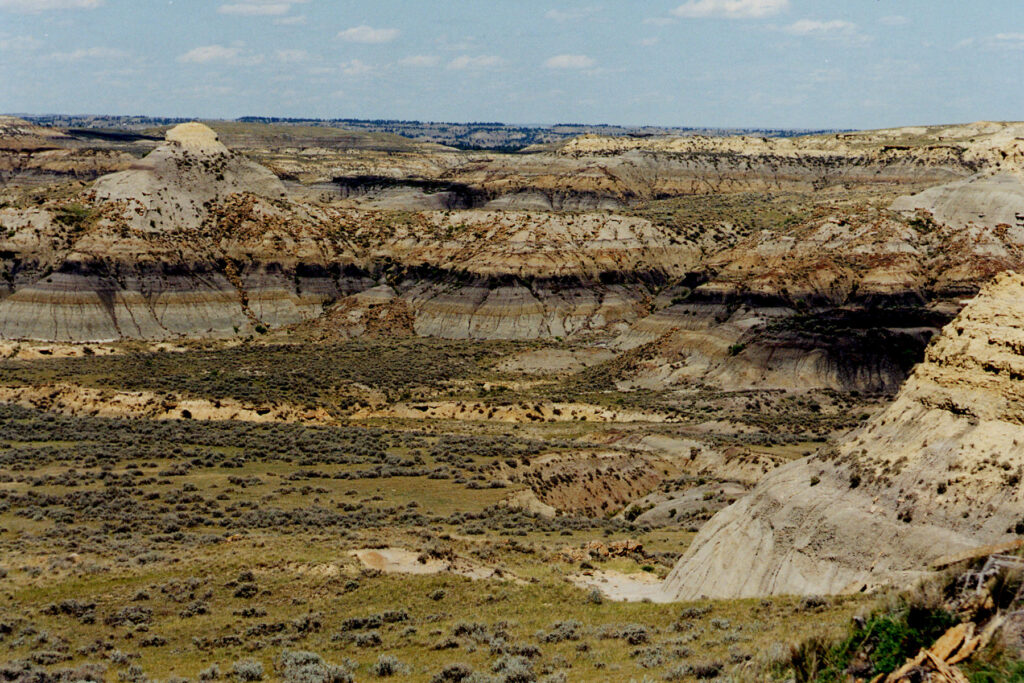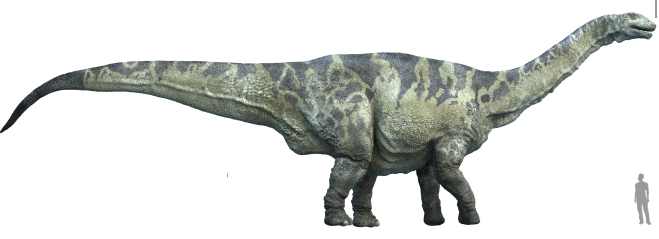José Bonaparte, often called the “Father of South American Paleontology,” transformed our understanding of dinosaur evolution through his remarkable discoveries in Argentina. Without formal academic training, this self-taught scientist unearthed some of the most important dinosaur fossils ever found, revealing that South America was home to unique dinosaur lineages that evolved separately from those in the Northern Hemisphere. His work not only put Argentine paleontology on the world map but also fundamentally altered our understanding of prehistoric life and continental drift. Bonaparte’s discoveries continue to shape our knowledge of dinosaur evolution, providing crucial evidence about how these magnificent creatures lived and evolved in the Southern Hemisphere.
Early Life and Self-Education

José Fernando Bonaparte was born on June 14, 1928, in Rosario, Argentina, far from the academic centers of paleontology. Growing up with limited formal education, Bonaparte developed a passionate interest in fossils during his youth, collecting specimens near his hometown. Despite never completing a traditional university degree in paleontology, he educated himself through voracious reading and hands-on fieldwork. This autodidactic approach would become a hallmark of his career, demonstrating that scientific breakthroughs can come from unconventional paths. By his twenties, Bonaparte had already begun making significant fossil discoveries, proving that formal credentials were no match for his natural talent and dedication to understanding prehistoric life. His humble beginnings never held him back from making world-changing contributions to science.
The Beginning of a Legendary Career

Bonaparte’s professional journey began at the Universidad Nacional de Tucumán, where he worked as a technician and collection manager despite his lack of formal qualifications. His exceptional talent for fossil identification and preparation quickly earned recognition from established scientists. In 1957, he made his first major discovery—Saltasaurus, a titanosaur sauropod that would later prove crucial in understanding sauropod evolution in South America. This early success established his reputation as a skilled field paleontologist with an uncanny ability to locate significant fossil sites. By the 1960s, Bonaparte had secured a position at the Argentine Museum of Natural Sciences in Buenos Aires, where he would build the foundation for modern South American paleontology. His methodical approach to fieldwork and careful documentation set new standards for paleontological research in the region, inspiring generations of South American scientists who would follow in his footsteps.
Discovering Carnotaurus: The Bull-Horned Predator

Among Bonaparte’s most iconic discoveries was Carnotaurus sastrei, unearthed in 1984 in Chubut Province, Patagonia. This remarkable theropod dinosaur featured distinctive bull-like horns above its eyes, a feature previously unknown in carnivorous dinosaurs. The nearly complete skeleton included rare impressions of skin, providing unprecedented insights into theropod dermal features. Carnotaurus represented not just a new species but an entirely new understanding of predatory dinosaur diversity in the Southern Hemisphere. Its unusually short arms—even shorter proportionally than Tyrannosaurus rex—and streamlined skull suggested specialized hunting adaptations unlike anything seen in Northern Hemisphere predators. The discovery of Carnotaurus fundamentally changed scientific understanding of theropod evolution and highlighted the distinct evolutionary paths that dinosaurs followed in isolated continents. This find alone would have secured Bonaparte’s place in paleontological history, but it was merely one of his many groundbreaking discoveries.
Unearthing Argentinosaurus: A Titan Among Giants

In 1987, Bonaparte made a discovery that would capture the world’s imagination—fragments of what would be recognized as one of the largest dinosaurs ever to walk the Earth. Named Argentinosaurus huinculensis, this colossal titanosaur is estimated to have reached lengths of 30-40 meters and weighed upwards of 70 tons. The enormous vertebrae and limb bones recovered from the Huincul Formation in Neuquén Province required special equipment just to transport them from the field. Bonaparte’s methodical excavation and analysis of these remains helped establish Argentinosaurus as a benchmark for maximum dinosaur size. The discovery fundamentally altered scientific understanding of the physiological limits of terrestrial animals and raised new questions about gigantism in dinosaurs. Perhaps most importantly, it demonstrated that South America was home to some of the most spectacular dinosaurs that ever lived, challenging the Northern Hemisphere bias that had dominated paleontology for decades. Argentinosaurus became not just a scientific milestone but a source of national pride for Argentina.
Revolutionary Dinosaur Lineages: Abelisaurids

One of Bonaparte’s most significant scientific contributions was the identification and description of the Abelisauridae, a family of predatory dinosaurs that dominated the Southern Hemisphere during the Late Cretaceous period. His 1985 discovery of Abelisaurus comahuensis in Patagonia revealed a completely distinct lineage of carnivorous dinosaurs that evolved separately from the tyrannosaurs and allosaurs of the Northern continents. Further discoveries by Bonaparte, including Carnotaurus and later Aucasaurus, demonstrated that abelisaurids represented a uniquely southern evolutionary radiation with distinctive features like shortened arms and elaborate skull ornamentations. This work provided compelling evidence for the geographical isolation of dinosaur populations following the breakup of the supercontinent Pangaea. Through careful anatomical studies, Bonaparte showed that abelisaurids were not simply regional variants of northern theropods but represented a fundamentally different evolutionary trajectory. His research on this group transformed understanding of dinosaur biogeography and highlighted the importance of Southern Hemisphere fossils in completing the global picture of dinosaur evolution.
The Los Alamitos Formation: A Fossil Treasure Trove

Bonaparte’s excavations at the Los Alamitos Formation in Río Negro Province during the 1980s yielded one of the most diverse Late Cretaceous fossil assemblages ever discovered in South America. This rich deposit contained not just dinosaurs but also early mammals, revealing crucial information about the ecosystems that existed just before the mass extinction event that ended the Mesozoic era. His meticulous collection and documentation of small vertebrate fossils, including jaws and teeth of primitive mammals, provided unprecedented insights into mammalian diversity during the age of dinosaurs. The Los Alamitos excavations yielded several new genera of mammals, including Reigitherium and Mesungulatum, dramatically expanding knowledge of South American mammal evolution. Bonaparte’s holistic approach to studying this formation—examining everything from tiny mammal teeth to dinosaur bones—revealed complex ecological relationships in ancient Patagonia. This work demonstrated his exceptional skill not just as a dinosaur hunter but as a comprehensive paleontologist interested in reconstructing entire prehistoric ecosystems.
Establishing the Museo Municipal de Ciencias Naturales Carlos Ameghino

In the early 1970s, Bonaparte founded the Municipal Museum of Natural Sciences “Carlos Ameghino” in Mercedes, Buenos Aires Province, creating a crucial institution for paleontological research in Argentina. This museum became not just a repository for fossil collections but a vibrant research center that trained numerous Argentine paleontologists. Under Bonaparte’s leadership, the museum organized regular field expeditions that significantly expanded Argentina’s paleontological collections and scientific knowledge base. He established rigorous protocols for specimen collection, preparation, and conservation that raised standards across South American paleontology. The museum served as an incubator for talent, providing opportunities for young researchers who might otherwise have lacked access to formal educational pathways in paleontology. Through this institutional work, Bonaparte created the sustainable infrastructure for paleontological science in Argentina that would outlast his career. His vision transformed the museum into a respected research institution that continues to contribute to paleontological knowledge today.
Mentoring the Next Generation of Paleontologists

Perhaps Bonaparte’s most enduring legacy lies in the dozens of paleontologists he trained and mentored throughout his long career. Despite lacking formal teaching credentials, he became one of the most influential educators in South American paleontology, sharing his knowledge through fieldwork, laboratory instruction, and collaborative research. Many of today’s leading Argentine paleontologists—including Rodolfo Coria, Fernando Novas, and Leonardo Salgado—trained under Bonaparte’s guidance and credit him with shaping their scientific approaches. His mentorship style emphasized hands-on experience, encouraging students to develop their observational skills and scientific intuition through direct engagement with fossils. Bonaparte was particularly known for giving young researchers significant responsibilities early in their careers, fostering independence and confidence. His willingness to share credit on publications also enabled many young scientists to establish themselves in the field. Through these students, Bonaparte’s methodological approach and scientific philosophy continue to influence paleontological research across South America and beyond.
International Impact and Recognition

By the 1980s, Bonaparte’s discoveries had captured international attention, leading to collaborative relationships with major institutions worldwide, including the American Museum of Natural History and various European research centers. His work fundamentally challenged the Northern Hemisphere bias that had dominated paleontology, demonstrating that South America possessed unique and important dinosaur lineages worthy of serious scientific attention. Bonaparte received numerous international awards, including the Gondwana Prize and the prestigious Richard Owen Medal from the Argentine Paleontological Association. The genus Bonapartenykus was named in his honor, recognizing his unparalleled contributions to dinosaur paleontology. His work appeared in leading scientific journals like Nature and Science, bringing Argentine paleontology to global prominence. Through international conferences and visiting researcher positions, Bonaparte became a respected ambassador for South American science, helping to secure funding and support for paleontological work in his home country. His ability to bridge between local field discoveries and global scientific discourse significantly elevated the profile of Argentine paleontology on the world stage.
Bonaparte’s Theoretical Contributions to Paleobiogeography

Beyond his fossil discoveries, Bonaparte made significant theoretical contributions to understanding how continental drift shaped dinosaur evolution. His comparative studies of South American dinosaurs with those from other Gondwanan continents (Africa, Australia, Antarctica, and India) helped establish patterns of evolutionary relationship that aligned with geological evidence of continental breakup. Through detailed anatomical analyses, Bonaparte demonstrated that certain dinosaur groups showed closer relationships to those on other southern continents than to Northern Hemisphere forms, providing biological evidence for continental drift theory. His 1986 paper “The early radiation of the South American carnivorous dinosaurs” revolutionized understanding of dinosaur biogeography by establishing that distinct regional lineages evolved after the fragmentation of Pangaea. This work provided crucial biological corroboration for the geological theory of continental drift at a time when the concept was still being refined. Bonaparte’s biogeographical framework continues to influence how paleontologists interpret the global distribution of prehistoric life, representing a theoretical contribution as important as his fossil discoveries.
Personal Challenges and Persistence

Bonaparte’s career was marked by remarkable persistence in the face of significant obstacles, including limited funding, political instability in Argentina, and the challenges of conducting field research in remote Patagonian locations. During Argentina’s military dictatorship (1976-1983), scientific research faced severe constraints, yet Bonaparte continued his work despite reduced institutional support. He often conducted field expeditions with minimal equipment, developing innovative techniques to extract and transport fossils with limited resources. Throughout his career, he faced skepticism from some international colleagues due to his lack of formal credentials, yet he overcame this through the sheer quality and importance of his discoveries. When financial constraints threatened his research program, Bonaparte frequently used personal resources to continue critical excavations, demonstrating extraordinary dedication to his scientific mission. His ability to maintain productive research through decades of economic and political turbulence in Argentina stands as testimony to his remarkable determination. This persistence ensured that crucial fossils were recovered and preserved during challenging periods in Argentine history.
Legacy and Continuing Influence

José Bonaparte passed away on February 18, 2020, at the age of 91, leaving behind an extraordinary scientific legacy that continues to shape paleontology. His catalog of discoveries includes over 25 new dinosaur species and numerous other vertebrate fossils that fundamentally altered understanding of Mesozoic life. The scientific institutions he established or developed, including the paleontology section of the Argentine Museum of Natural Sciences, remain vibrant centers of research. The methodological approaches he pioneered—particularly his careful attention to small, easily overlooked fossils and his emphasis on fieldwork—continue to influence paleontological practice throughout South America. Perhaps most importantly, the thriving community of South American paleontologists he trained ensures that his scientific approach will influence discoveries for generations to come. Current research on South American dinosaurs, including ongoing excavations of titanosaurs and studies of dinosaur extinction patterns, builds directly on the foundations Bonaparte established. His work not only changed what we know about dinosaurs but also transformed how and where paleontologists look for them, permanently expanding the geographical scope of dinosaur research.
Conclusion

José Bonaparte’s extraordinary journey from self-taught fossil collector to internationally renowned paleontologist revolutionized our understanding of dinosaur evolution. Without formal academic credentials, he discovered some of the most spectacular dinosaurs ever found, including Argentinosaurus and Carnotaurus, while mentoring generations of South American scientists. His work proved that the Southern Hemisphere had unique dinosaur lineages that evolved separately from their northern counterparts, providing crucial biological evidence for continental drift theory. Bonaparte’s legacy lives on not just in museum displays and scientific papers, but in the thriving Argentine paleontological community he helped create. His life demonstrates that groundbreaking science can come from unexpected sources, and that dedication and observational skill can sometimes matter more than formal qualifications. Through his discoveries, South America’s dinosaurs finally took their rightful place in the story of life on Earth.




